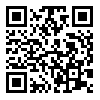
International Journal of Molecular and Cellular Medicine (IJMCM)
Cellular and Molecular Biology Research Center, Babol University of Medical Sciences
BibTeX | RIS | EndNote | Medlars | ProCite | Reference Manager | RefWorks
Send citation to:
URL: http://ijmcmed.org/article-1-629-en.html

 , Morteza Eshaghi1
, Morteza Eshaghi1 
 , Mahdi Rohani2
, Mahdi Rohani2 
 , Mohammad Reza Pourshafi2
, Mohammad Reza Pourshafi2 
 , Malihe Talebi3
, Malihe Talebi3 

2- Department of Microbiology, Pasteur Institute of Iran, Tehran, Iran.
3- Department of Microbiology, Faculty of Medicine, Iran University of Medical Sciences, Tehran, Iran. ,
Lactobacillus species play an important role in gastrointestinal (GI) tract function, intestinal microbiota balance, and the immune system activity by exerting a strong activity against many intestinal pathogens. The aim of this study was to isolate Lactobacillus species from fecal samples, investigate their antimicrobial properties, and characterixe their bacteriocins encoding genes. 48 fecal samples were grown on MRS broth and then MRS agar. The colonies grown on MRS agar were selected and identified by PCR. 72 Lactobacillus species were obtained from 434 lactic acid bacteria (LAB) strains. Approximately 40% of all Lactobacillus isolates had antimicrobial activity against one or more microorganisms and 17.4% of them were active against all four indicator bacteria. The frequency of bacteriocin encoding genes were 5 (6.9%), 3 (4.1%) and 5 (6.9%) for Gassericin A, Plantaricin S and Laf operon, respectively. pH alteration had no effect on antibacterial activity, but in the alkaline range these activities were reduced and the strains showed the highest antibacterial activity after 48 h incubation. These data indicate that the majority of isolates were susceptible to GI tract or belonged to other bacterial forms such as viable but nonculturable (VBNC). The detection of bacteriocin encoding genes in about only 6% of all Lactobacillus isolates seems to be due to the existence of many other bacteriocin encoding genes in Lactobacillus species which were not tested. Further study of the bacteriocin gene clusters, types, subtypes and the probiotic effect of these strains will contribute to a better characterization of these isolates.
Received: 2016/12/9 | Accepted: 2017/02/18 | Published: 2017/02/28
| Rights and permissions | |
 |
This work is licensed under a Creative Commons Attribution-NonCommercial 4.0 International License. |



